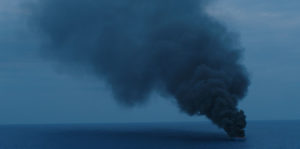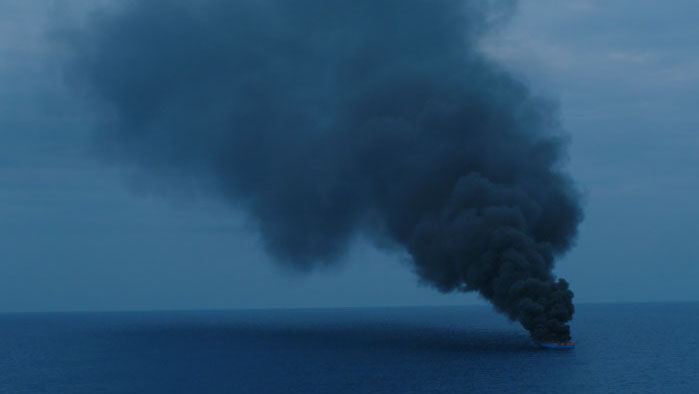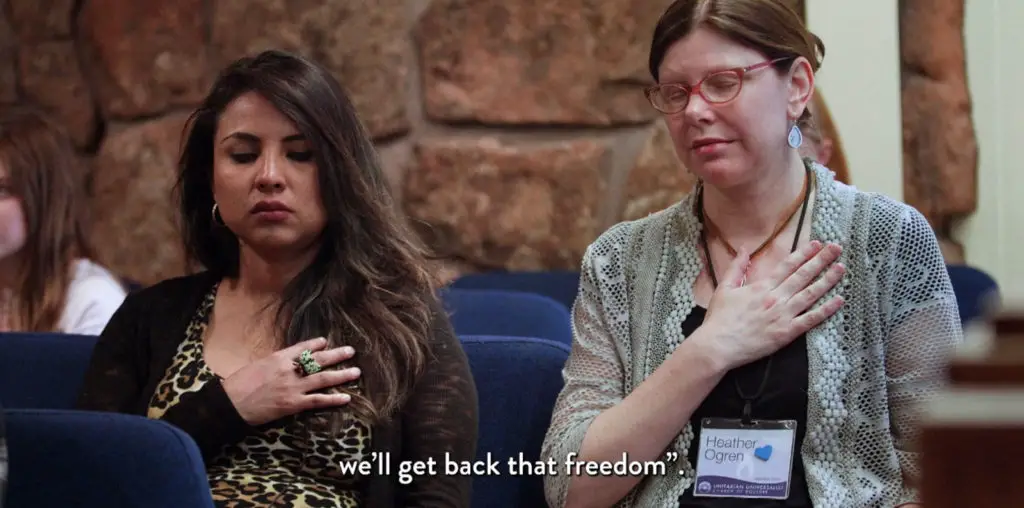
Egyptian director Sam Abbas presents the observational documentary Europe’s New Faces as a close-up immersion into the gritty details of the migrant experience. People are seen crossing the Mediterranean Sea out of Libya and then settling illegally in Paris-based squat housing.
The film does not introduce particular individuals, nor provide interviews, nor any explanations of what is being shown. The POV is as if the viewer were on the ship, or living in quarters as an undocumented immigrant. The scenes are in natural light, often very dark, and include phone quality video. Abbas also shot everything in extreme close-up, making the experience intensely claustrophobic, leaving little sense of context.
We see daily life here as migrants preparing meals, grooming, being looked after when sick, and in religious observance of prayer and rituals. The harshness of the migrant’s lives is stark and awful. They are jammed into ship’s decks to make the trip and then wind up living in squalid spaces that are derelict and forgotten by the rest of society. The notion that this is the “better life” they dreamed of seems ridiculous. We also see the efforts of the Médecins Sans Frontières (MSF) rescue ship Geo Barents, which operated across the Mediterranean from June 2021 until late 2024, saving 12,675 people in 190 operations. Abbas includes a graphic video of a cesarean section operation, not for the faint of heart.
“…a close-up immersion into the gritty details of the migrant experience…”
Abbas discussed Europe’s New Faces in an interview with Deadline: “Making this film I spent close to three years with migrants in different capacities and got a glimpse into a world so different from my own that it’s hard to fully comprehend. A world with constant and never-ending challenges. A world in which socially, the isolation is profound.”
Films like his exist in a space that seems to call for a delicate touch in critique. While one would never want to minimize the horrific experiences of the subjects, we can focus on the structure of the film. At the core of how to analyze the film is the question of what Abbas hopes to accomplish and how it will be presented. This film is set for showings at special presentations. It will have a premiere at MoMa in New York. As such, it is more of an art exhibit than a commercial endeavor, and it would be unfair to review it using the same criteria as films meant for a broader audience.
Abbas rolls out 2 hours and 40 minutes of context-free video and images here. It’s often hard to see, and we never get to know anyone depicted. Even the most sympathetic viewer is going to struggle to stay engaged for such a long run of seemingly random footage. The only nod to filmic nicety is the outstanding soundtrack music by Bertrand Bonello, with wistful tones of anxiety and isolation. Press materials provided do set the needed context and explanation of what is being shown, but the viewer may not have this material available.
Europe’s New Faces is a worthy exercise to pull back the curtain on the experience, but it should perhaps be edited down to 90 minutes or so and include some framing context so we know who and what we are seeing and why the migrants chose to make this trip.

"…a worthy exercise..."


